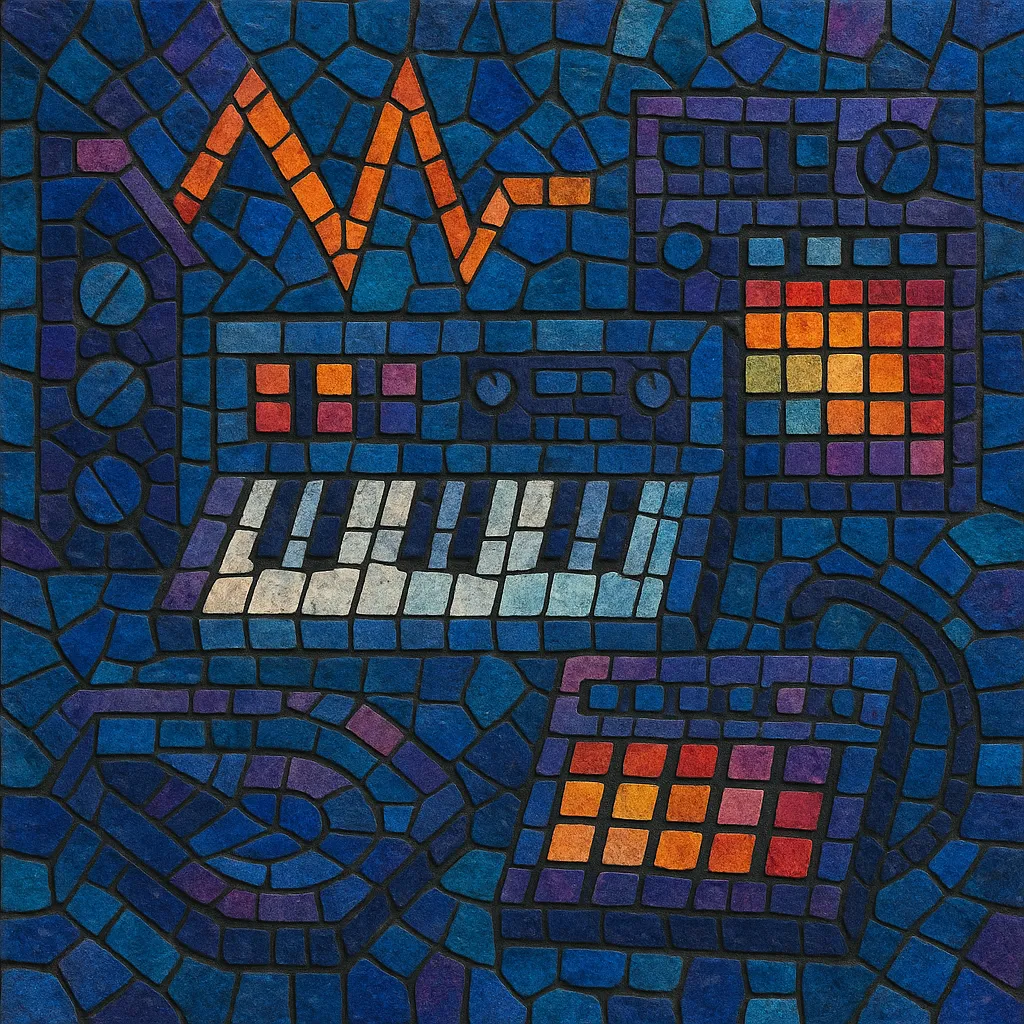Synth-pop is a pop-oriented style that foregrounds the synthesizer as its primary instrument, often paired with drum machines and sequencers. It favors clean, melodic hooks, concise song structures, and a sleek, modernist sound that ranges from cool and minimal to lush and romantic.
Emerging at the turn of the 1980s from the UK new wave and post-punk scenes, synth-pop leveraged affordable analog and then digital keyboards to bring electronic textures into the mainstream. Its sonic palette includes arpeggiated basslines, shimmering pads, bright leads, gated or machine-driven drums, and polished vocals that convey both futuristic detachment and emotional immediacy.
Synth-pop crystallized in the late 1970s as post-punk and new wave artists embraced synthesizers not merely as embellishment but as song-defining instruments. German electronic and krautrock pioneers inspired UK acts in Sheffield, Manchester, and London, while the falling cost of machines like the Korg MS-20 and Sequential Circuits Prophet-5 made electronic composition attainable.
By 1980–1983, synth-pop dominated UK charts. Acts such as The Human League, Gary Numan, OMD, Soft Cell, and Depeche Mode married pop songwriting to drum machines (LinnDrum, TR-808) and analog polysynths (Jupiter-8, Juno-60). MTV amplified the style’s glossy, fashion-forward image, and producers like Trevor Horn pushed studio craft to cinematic heights. The movement overlapped with the New Romantic scene and spread internationally via bands like A-ha, Pet Shop Boys, and Eurythmics.
As digital synthesis (Yamaha DX7), samplers, and MIDI workflows took hold, synth-pop branched into darker or dancier directions, feeding into dance-pop, house-inflected pop, and electronic rock. While guitar-led styles resurged in the 1990s, synth-pop aesthetics persisted in mainstream and alternative acts, film scores, and radio pop production.
The 2000s brought electroclash’s retro-futurist edge and indietronica’s DIY synthesis, followed by chillwave, synthwave/retrowave, and vaporwave’s vivid 1980s nostalgia. Contemporary electropop and global pop continue to rely on synth-pop’s core toolkit—hook-driven melodies, programmable drums, and emotive vocal production—affirming the genre’s lasting influence on modern music.
Use one or two polysynths for pads and chords (e.g., Juno/Jupiter/Prophet-style sounds), a monophonic or virtual synth for bass and leads, and a drum machine (or samples) for tight, programmable rhythms. Arpeggiators and simple step sequencers are central to the feel.
Keep a steady 4/4 with punchy, machine-like drums at roughly 100–130 BPM. Combine a solid kick on beats 1 and 3 (or every beat for dance-oriented tracks) with crisp snares on 2 and 4, bright hi-hats, and occasional handclaps or gated reverb for period flavor.
Write concise, hooky melodies supported by diatonic progressions such as I–V–vi–IV or i–VI–III–VII. Use triads with occasional 7ths/9ths for color. Employ arpeggiated basslines, octave jumps, and counter-melodies between lead and pad parts to create motion without clutter.
Blend warm analog-style pads with bright, slightly detuned leads; apply chorus on pads, subtle saturation on bass, and tasteful reverb/delay on vocals and synths. Use LFOs for gentle vibrato, filter sweeps for transitions, and sidechain compression sparingly to keep the groove breathing.
Prioritize memorable choruses and clear phrasing. Lyrical themes often balance futurism and everyday emotion: urban life, intimacy, longing, alienation, and optimism. Delivery can be cool and detached or earnest and romantic; double-tracking and harmonies enhance the pop sheen.
Favor verse–pre–chorus–chorus structures with a synth-led middle eight or instrumental break. Introduce and remove layers (pads, arps, counter-lines) to maintain interest, and use short fills or filter transitions between sections.


